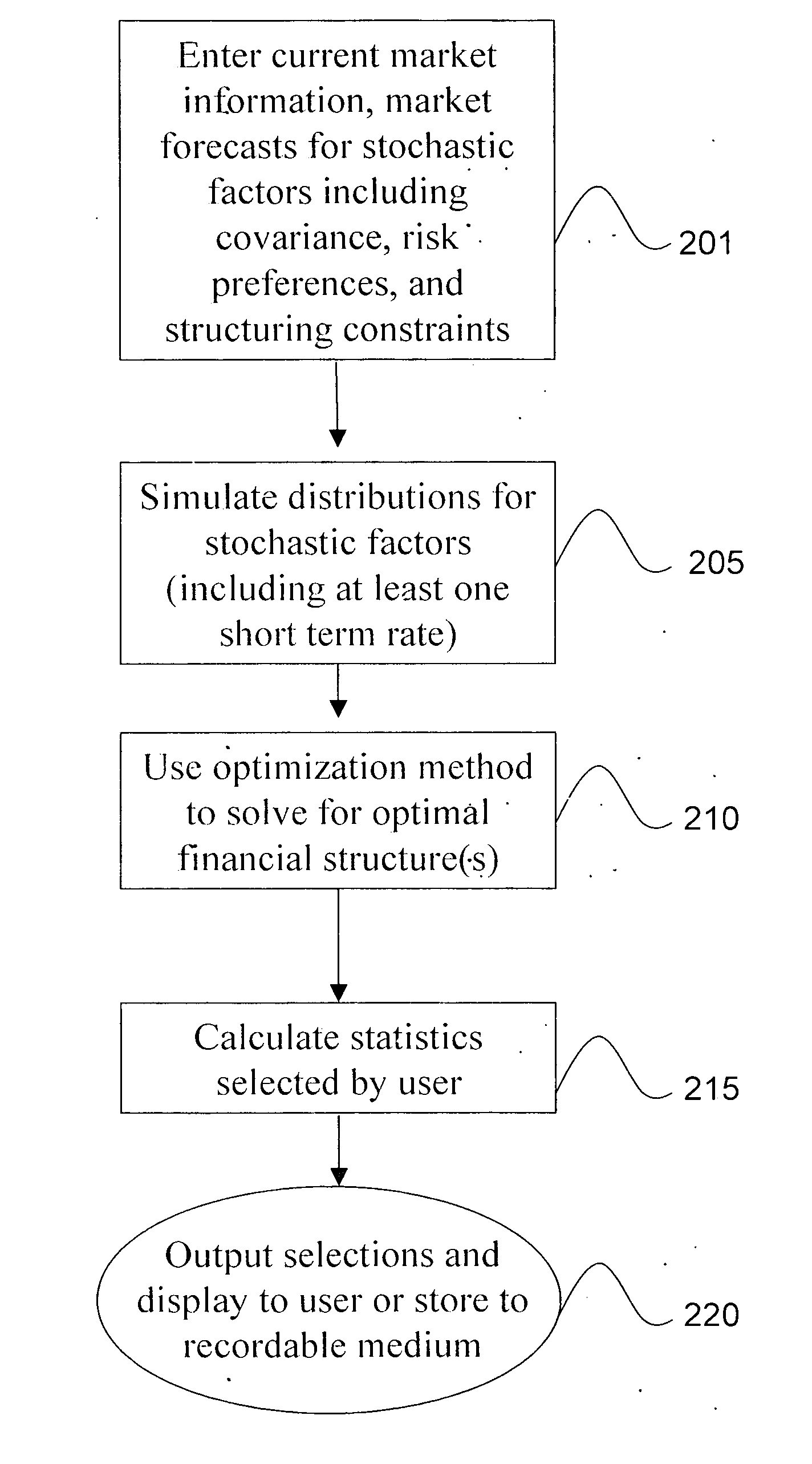Systems, methods and programs for determining optimal financial structures and risk exposures
a financial structure and risk technology, applied in the field of systems, methods and programs for determining optimal financial structures and risk exposures, can solve problems such as far more difficult and complex problems, and achieve the effect of reducing the expected cos
- Summary
- Abstract
- Description
- Claims
- Application Information
AI Technical Summary
Benefits of technology
Problems solved by technology
Method used
Image
Examples
example 1
$100 mm Debt, 20Y Level. $10 mm Cash
[0091] In the present example, it is assumed that an issuer has $100 mm of debt outstanding at maturity amounts and coupons as shown in FIG. 10. Retiring these bonds in full requires that the municipality meet total principal and interest on an annual basis of approximately $7.1 mm as reflected in FIG. 11. Further, the issuer is deciding to enter into an interest rate swap where the issuer receives a fixed rate of interest and pays a floating amount of interest based upon changes in the BMA index (often called a “swap to floating” or “fixed receiver swap”). How large should the interest rate swap be?
[0092] Traditionally, this type of decision has been driven by a combination of subjective factors including, but not limited to, rating agency views, risk appetite, revenue stability, debt service coverage, and other metrics of financial flexibility. For instance, without limitation, rating agencies often viewed floating rate exposure greater than ...
example 2
Cap Rate
[0104] In the present example, a for-profit corporation has issued $100 million of floating rate bonds indexed to LIBOR at the rates generated above in Example 1. Management has decided that over the next 5 years it can comfortably manage $300,000 of semi-annual interest expense volatility. If management were to put in place a $100 million interest rate cap over the next five years, at what rate should the cap be set so that the annual interest expense volatility falls from its current $506,000 to the target goal of $300,000?
[0105] With the LIBOR simulation identical to the one described in Example 1, an optimization problem arises in that we are seeking the maximum rate the strike rate on the cap can be such that the target cash flow volatility of $300,000 is attained. It is found that with a cap rate of 3.85%, semi-annual interest expense volatility falls to $299,605.
[0106] Another question might be to determine how much (in notional) of a 3.50% cap would be required to...
example 3
Not-for-Profit Hospital System Evaluating How Much Cash to Hold
[0107] The issuer in this example is a not-for-profit hospital system managing $2 billion in tax-exempt debt with an average life of 15 years, and $3 billion in investment assets spread across money market funds, domestic investment grade and sub-investment grade fixed income investments, foreign and domestic equity holdings, and some market neutral hedge funds. The debt is issued in roughly equal fixed and floating rate modes, and 50% of the floating rate bonds are hedged with LIBOR based interest rate swaps ($500 million notional in swaps) where the hospital pays fixed and receives floating.
[0108] By creating a multivariate distribution of short term BMA and LIBOR rates and the various asset classes above, statistics of “financial margin” or “financial spread” can be calculated by taking the return on the asset portfolio and subtracting the cost of the debt portfolio (with or without principal repayments) at each of...
PUM
 Login to View More
Login to View More Abstract
Description
Claims
Application Information
 Login to View More
Login to View More - R&D
- Intellectual Property
- Life Sciences
- Materials
- Tech Scout
- Unparalleled Data Quality
- Higher Quality Content
- 60% Fewer Hallucinations
Browse by: Latest US Patents, China's latest patents, Technical Efficacy Thesaurus, Application Domain, Technology Topic, Popular Technical Reports.
© 2025 PatSnap. All rights reserved.Legal|Privacy policy|Modern Slavery Act Transparency Statement|Sitemap|About US| Contact US: help@patsnap.com



